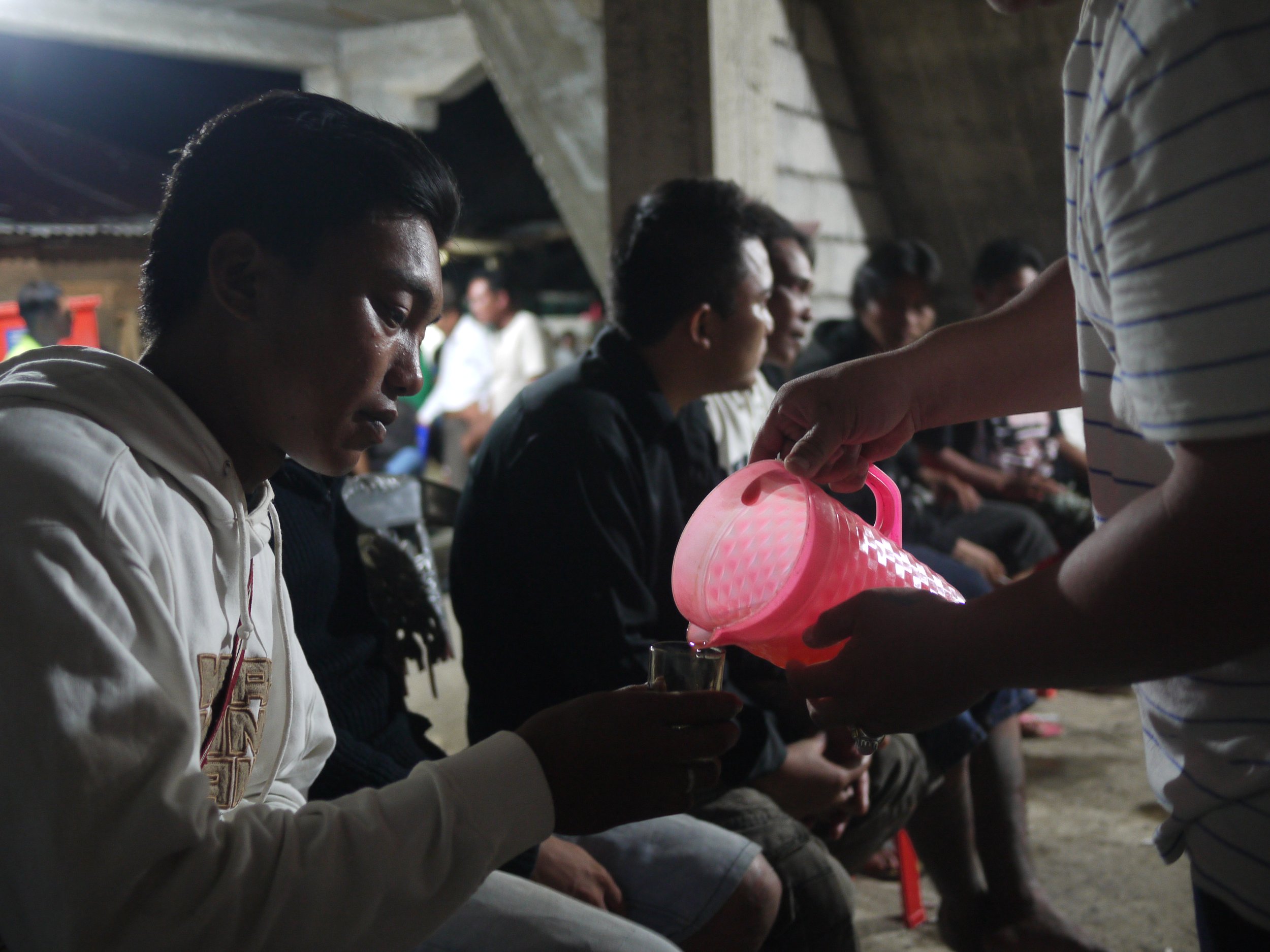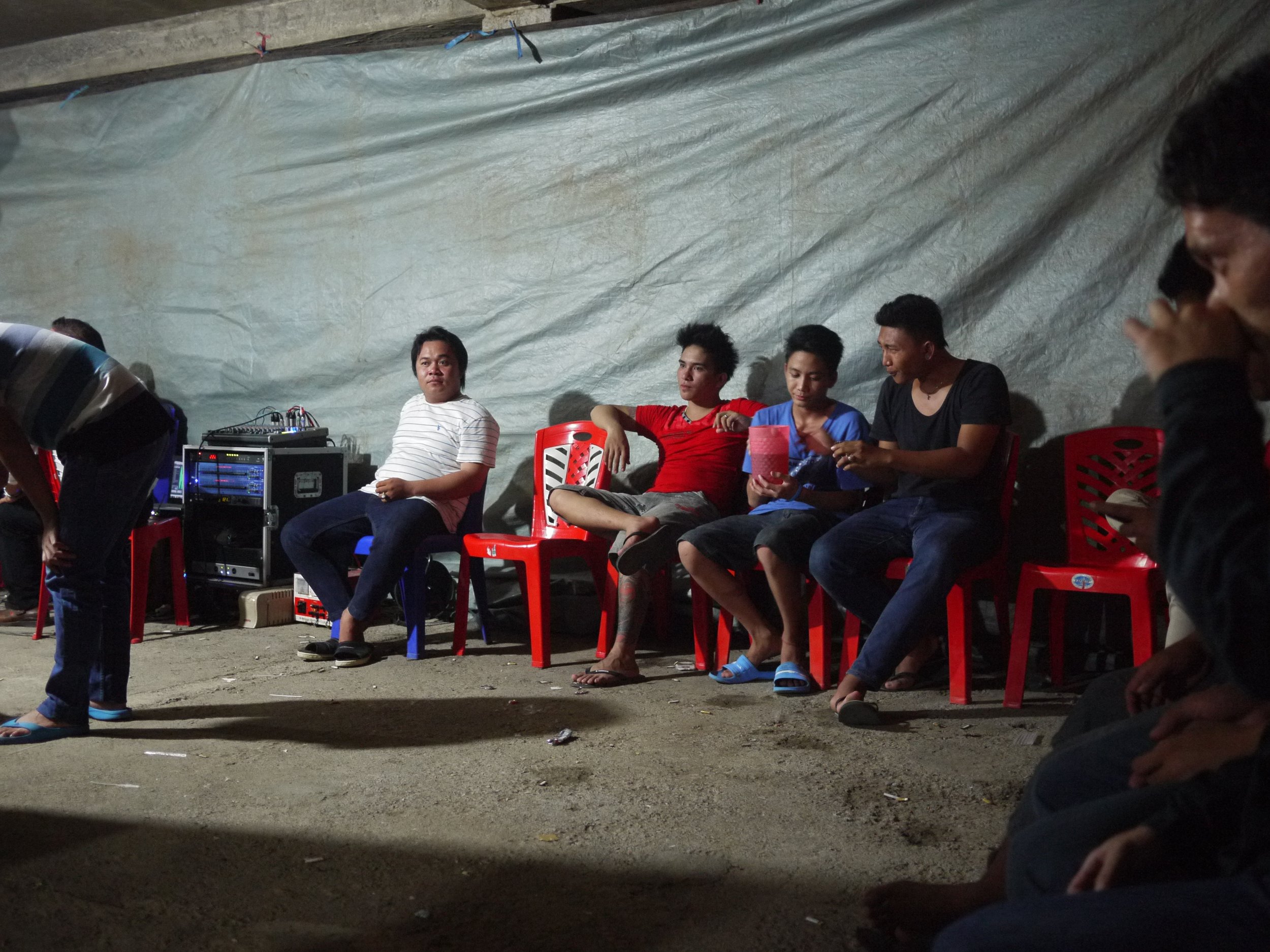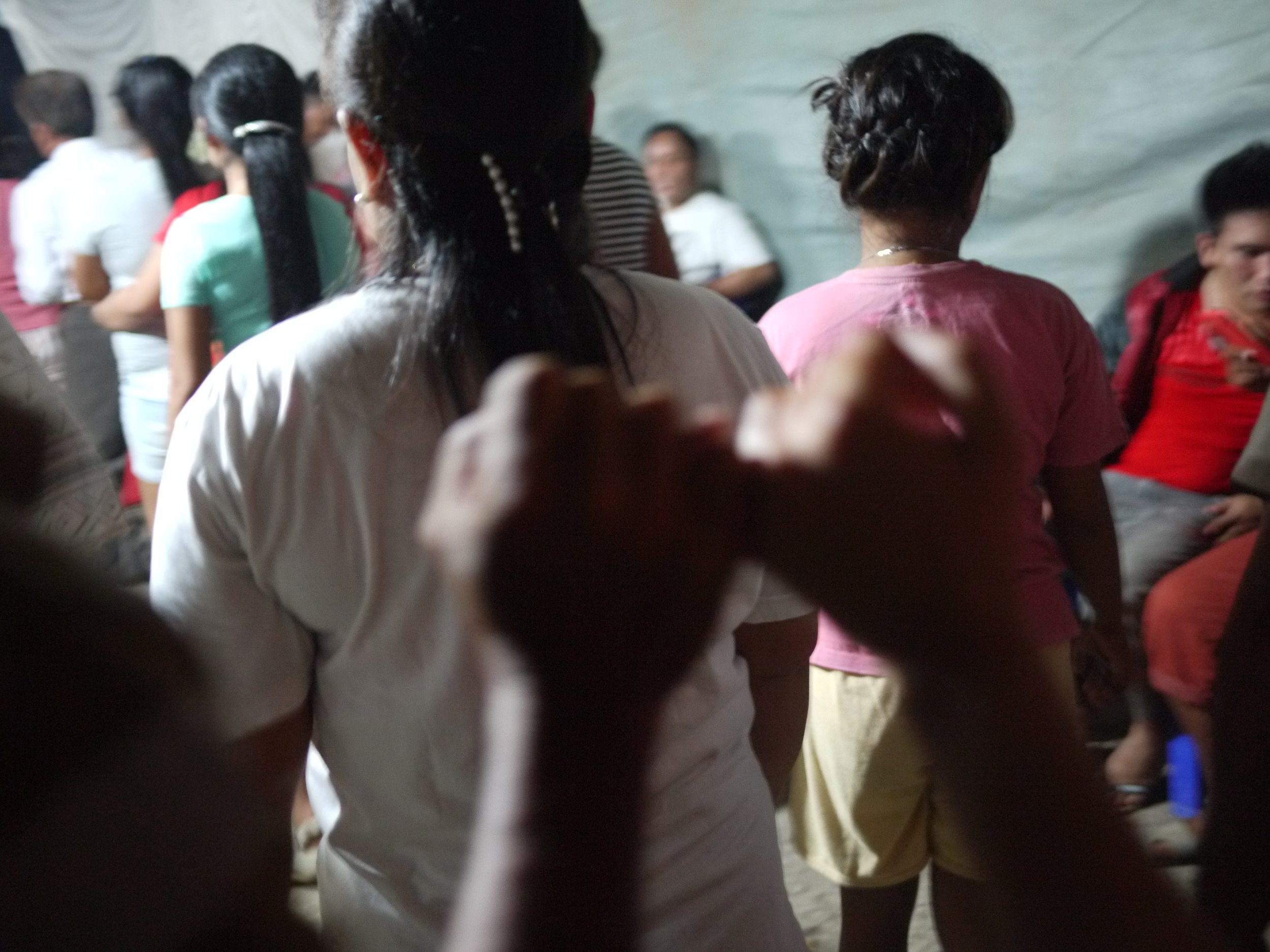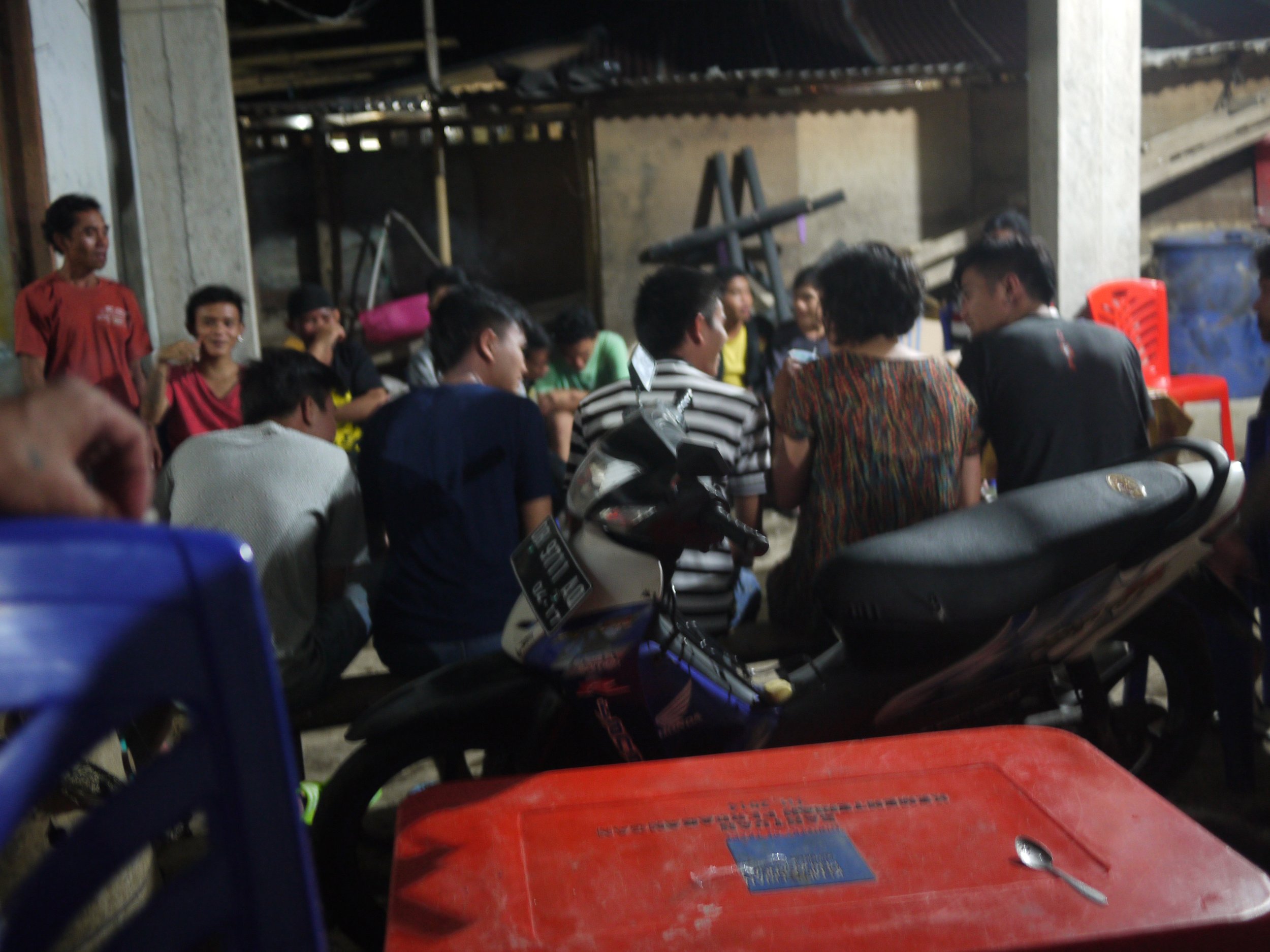Chapter 2 | Drinking Circle
There were almost as many red chairs as there were people at the wedding party. The chairs, mostly made of plastic and placed directly next to each other, formed the small and large drinking circles that made up most of the party. The largest circle also marked the boundary of the dance floor. Its chairs were lined up against the walls, uniting those sitting behind the music system with those sitting behind their musical instruments, and us—two foreigners sitting in front of two large and loud speakers.
Chapter 2, Drinking Circle, highlights the situatedness of the drinking circle by tracing how Cap Tikus’s effects come to life in a complex array of relations at a wedding party in the city. It presents the different notions and sensations of “drunkenness” and their shifting normative values, with the wedding party providing an example of an intergenerational space in which drinking and certain forms of drunkenness are tolerated.
In this chapter, we step inside the drinking circle at a specific event—a wedding party—to observe how Cap Tikus and its effects come to be experienced in multiple ways. Zooming in on the drinking circle, we seek to understand how it works, how it is experienced, and how it shapes (and is shaped by) the use of Cap Tikus. The drinking circle is a crucial part of the sociality that surrounds the drink, and Cap Tikus plays a crucial role in bringing people together within the circle; together, the circle and the drink coproduce diverse socialities.
The man with the jug refilled the glass, and the politician’s neighbor put it to his lips, downing the sloki in a single go. I was witnessing a suspension of everyday hierarchies and authority: normally, there would be a distance between these two men, but the shared glass now bridged it.
“It’s passive,” he said, describing the circle we were in; what made it so was that “we make a circle, and someone becomes the bartender.” The role of server—which many Manadonese called “bartender”—meant being responsible for ensuring that everyone got a turn to drink. The role was assigned according to seniority: both youth and newness to the circle were factors. It was like a rite of passage, with the youngest and/or newest person expected to serve as bartender until someone else – most likely someone younger—joined the circle. The bartender wasn’t a feature of all drinking circles; in some, people simply served themselves.
With or without a server, communal drinking like this was most often referred to as “passing the glass around” (putar gelas) or, in typical Manadonese, “making or following a pathway” (ba jalur).
Time and again, drinking together in this way was explained to me as being about maintaining a sense of unity within the circle through the shared, embodied experience of togetherness (kebersamaan), as a policeman might sit alongside a gangster, a politician side by side with his opponent, all sharing a single glass. This sharing of the glass and the physical formation of the drinking circle reflected and promoted an unusual level of social mixing.
The tradition of drinking together was thus malleable and could take on new and different forms. More consistent, or ritualized, was the drink itself, or at least how it was served. The most common way of serving Cap Tikus, whether mixed or pure, was as a sloki. The shotness of it enabled a tempo in which shots were served and drunk, served and drunk, served and drunk, served and—Regrettably, I was often the one responsible for interrupting this tempo, given my strong preference for sipping drinks.
The drinking circles I described included the drinking glass, Cap Tikus, dancing bodies, red plastic chairs, the shape of the circle, gaps, loud music, a “bartender,” a sense of togetherness, persisting social differentiation, a purple jug, laughter, a sense of celebration, a commanding aunty, and so on. Foregrounding these elements helps underline the work it takes to create suasana, as well as the importance of such, as these force fields shape and are shaped by distinct drinking circles, encompassing preman, politician, and visiting researchers alike, even if in differing ways.
These specific atmospheres—affective constellations of complex spatial, temporal, sensorial, affective, and sociopolitical practices and relations— concentrated and modulated Cap Tikus’s effects. Like heat, which is both corporeal and atmospheric, emotion and affect, Cap Tikus effects were dispersed, asking individuals to dissolve and rethink the boundaries between body and place, the biological and social realms, and subjective and non-human environments.
The text on this page is extracted from the PhD thesis: “Inside the Drinking Circle: Cap Tikus, Contested Modernities, and Youth Resistance in Manado, North Sulawesi.” This thesis was submitted by Nastasja Ilonka Roels as part of the Doctoral Regulations of the University of Amsterdam (UvA). All text references should be made to the original thesis manuscript, once published via the UvA Digital Academic Repository, and not to this website. Permission is required to copy, display or reuse images, songs, and videos.









